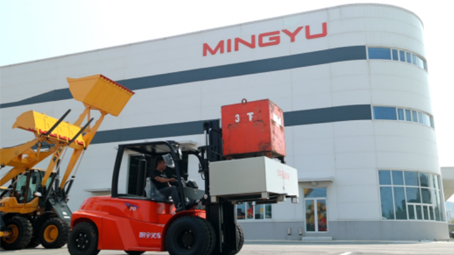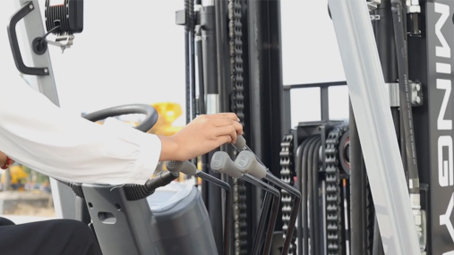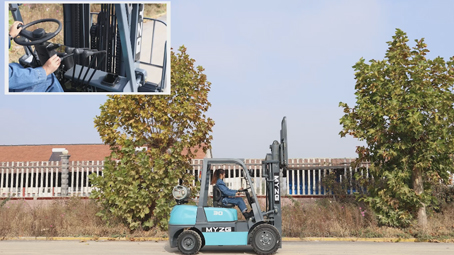
A forklift is a powerful piece of machinery essential for many industries. However, operating a forklift requires skill, knowledge, and adherence to safety guidelines. This comprehensive guide will delve into the intricacies of forklift operation, from basic controls to advanced techniques, ensuring safe and efficient handling of materials.
What is a Forklift?
Definition and purpose
Types of forklifts (counterbalance, reach, sit-down, stand-up)
Forklifts are classified into different specifications and power according to working conditions and regions (LPG forklift、electric forklift、diesel forklift、off-road forklift、stacker)

Before diving into operation, it's crucial to understand the basic components of a forklift:
Mast: The vertical structure that supports the forks.
Forks: The prongs used to lift and transport loads.
Counterbalance: A weight at the rear of the forklift to maintain stability.
Hydraulic System: Powers the lift and tilt functions.
Controls: Levers, pedals, and buttons that operate the forklift.
A thorough pre-operational inspection is essential to ensure the forklift is in safe working condition:
Visual Inspection:
Check for any damage to the mast, forks, tires, and body.
Inspect the hydraulic system for leaks.
Verify the battery is fully charged and the water level is correct.
Ensure all lights and indicators are functioning properly.
Operational Check:
Test the engine or motor, steering, brakes, horn, and controls.
Ensure the parking brake engages and releases smoothly.
Starting the Forklift:
Engage the parking brake.
Turn the ignition key to the "on" position.
Release the parking brake.
Depress the accelerator pedal to start the engine.
Steering and Maneuvering:
Use the steering wheel or tiller handle to control the direction
Practice turning in tight spaces and maneuvering around obstacles.
Be cautious when traveling on inclines or declines.
Lifting and Lowering Loads:
Raise the forks to the desired height using the lift lever.
Position the forks under the load and engage the forks to pick it up.
Lower the load carefully, ensuring it's stable.
Transporting Loads:
Drive slowly and cautiously, especially when carrying heavy loads.
Avoid sudden stops and turns.
Be aware of your surroundings and potential hazards.

Adhere to Safety Regulations:
Follow OSHA and local safety guidelines.
Obtain necessary certifications and licenses.
Wear Appropriate PPE:
Use safety helmets, gloves, and safety footwear.
Avoid Distractions:
Focus on the task at hand and avoid using mobile devices.
Inspect Loads:
Ensure loads are properly secured and within the forklift's capacity.
Pedestrian Safety:
Yield to pedestrians and use audible warnings.
Fire Safety:
Know the location of fire extinguishers and how to use them.
Regular maintenance is crucial for optimal performance and safety:
Daily Maintenance:
Check tire pressure and condition.
Inspect the hydraulic fluid level.
Clean the forklift to remove debris and dirt.
Regular Maintenance:
Replace worn parts, such as tires and filters.
Perform battery maintenance, including charging and watering.
Have the hydraulic system serviced by a qualified technician.
In Case of Fire:
Evacuate the forklift immediately.
Use a fire extinguisher to put out small fires.
Alert emergency services.
In Case of Accident:
Assess the situation and provide first aid if necessary.
Report the accident to your supervisor.
Document the incident and cooperate with the investigation.

By following these guidelines and prioritizing safety, you can become a skilled and responsible forklift operator. Remember, continuous training and practice are essential to maintain proficiency and prevent accidents.
Name: selena
Mobile:+86-13176910558
Tel:+86-0535-2090977
Whatsapp:8613181602336
Email:vip@mingyuforklift.com
Add:Xiaqiu Town, Laizhou, Yantai City, Shandong Province, China